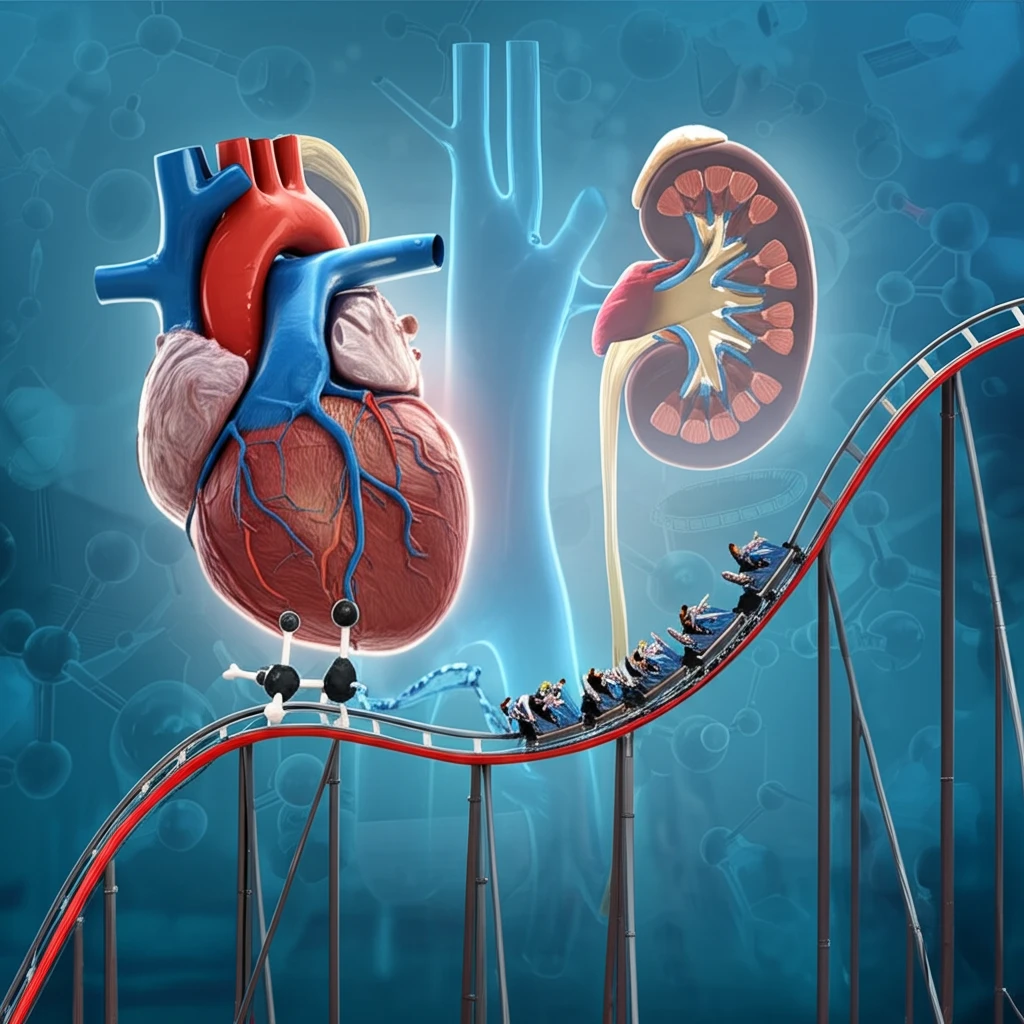
Blood Sugar Rollercoaster: How Glycemic Swings Harm Kids After Heart Surgery
"New research uncovers the hidden dangers of fluctuating blood sugar during pediatric heart surgery, revealing a surprising link to kidney injury."
For years, medical professionals have focused on avoiding hyperglycemia (high blood sugar) during and after surgery, especially for cardiac procedures. However, emerging research suggests that it's not just the peaks, but also the valleys – the dramatic swings in blood sugar levels – that can be particularly harmful, especially for vulnerable pediatric patients.
A recent study published in the journal Renal Failure sheds new light on this issue, revealing a concerning link between intraoperative glycemic fluctuation (IGF) and acute kidney injury (AKI) in children undergoing cardiac surgery. This research challenges conventional wisdom and highlights the need for a more nuanced approach to blood sugar management in young patients.
The findings suggest that wide swings in blood sugar during surgery can significantly increase a child's risk of developing AKI, a serious condition that can lead to long-term health problems. This article delves into the details of the study, explores the potential mechanisms behind this phenomenon, and offers practical insights for parents and caregivers.
What's More Dangerous Than High Blood Sugar? The Rollercoaster Effect

The study, conducted by researchers in China, retrospectively analyzed data from 1026 pediatric patients who underwent cardiac surgery between 2013 and 2016. The researchers meticulously collected perioperative glycemic data, including blood sugar levels up to 48 hours after surgery, and assessed the incidence of AKI using a modified version of the Acute Kidney Injury Network (AKIN) criteria.
- AKI Incidence: 11.5% of pediatric cardiac surgery patients.
- Glycemic Fluctuation Matters: Wider swings in blood sugar during surgery strongly linked to AKI.
- Severity Increases with Fluctuation: The more the blood sugar fluctuated, the more severe the AKI tended to be.
- Not Just Hyperglycemia: High average blood sugar alone wasn't the culprit; it was the variation that posed the greater threat.
Protecting Young Hearts and Kidneys: What Can Parents Do?
While the technical aspects of managing blood sugar during surgery are the responsibility of the medical team, parents and caregivers can play a crucial role in advocating for their child's health. Open communication with the surgical team is essential. Ask about their strategies for managing blood sugar during the procedure and express your concerns about glycemic variability. While more research is needed to determine the optimal approach to blood sugar management in pediatric cardiac surgery, this study underscores the importance of minimizing glycemic fluctuations to protect young patients from potentially devastating kidney injury. By staying informed and proactive, parents can help ensure the best possible outcomes for their children.
